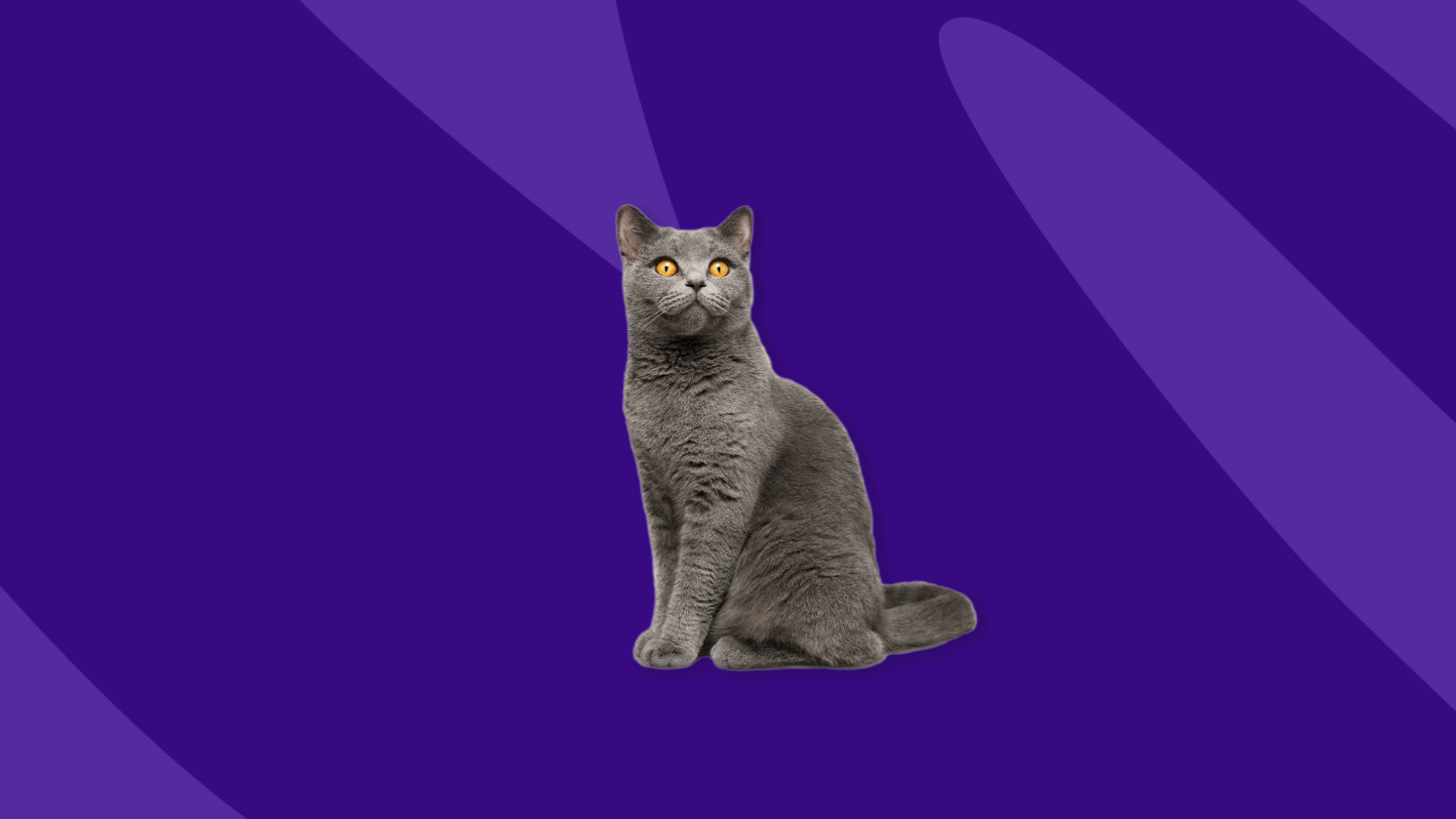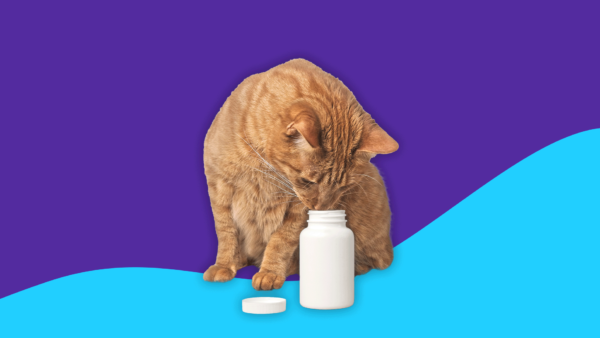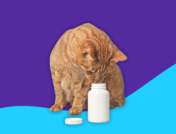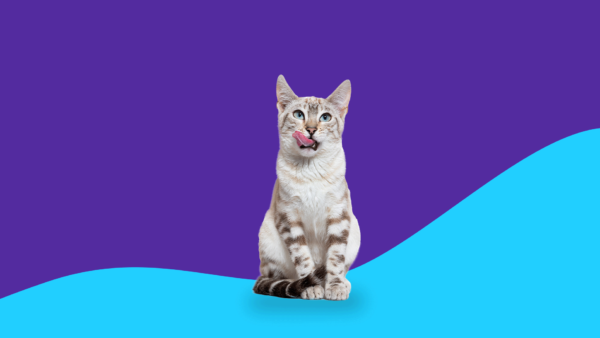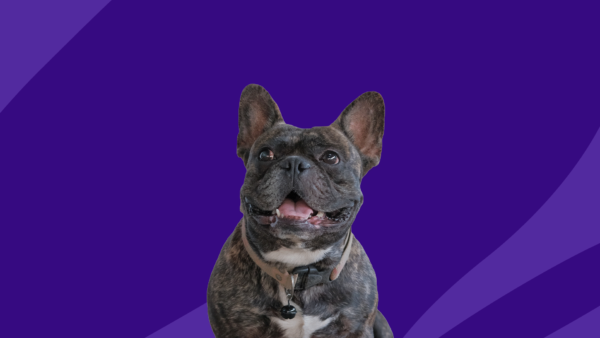Key takeaways
Gabapentin is used to treat chronic pain, anxiety, seizures, and epilepsy in cats.
The standard gabapentin dosage for cats is 50 milligrams.
The maximum gabapentin dosage for cats is 200 milligrams.
The dosage schedule can vary with each cat but is typically every six to 24 hours or, in some instances, 30 minutes before veterinary visits.
Gabapentin is approved by the U.S. Food and Drug Administration (FDA) as an anticonvulsant medication for humans and is also commonly used in pets. According to Ray Spragley, DVM, CVA, CCRT, the founder of Zen Dog Veterinary Care in New York, a veterinarian may prescribe gabapentin for cats for off-label use to manage nerve pain and control seizures and anxiety.
The most common side effects of gabapentin for cats include the following:
- Drowsiness
- Sedation
- Ataxia (incoordination)
- Hypersalivation
- Vomiting
According to Dr. Spragley, the gabapentin dose for cats depends on weight and health condition, but the standard dose is typically 50 milligrams (mg).
RELATED: Save up to 80% on gabapentin | How to save on pet prescriptions
How much gabapentin can I give my cat?
As Dr. Spragley mentioned, the standard gabapentin dosage for cats is 50 mg. However, the dosage can vary with each cat.
“The standard dose for cats varies greatly on the targeted use of the drug,” says Aziza Glass, DVM, CVA, a veterinarian at Complete Animal Wellness and Longevity Medispa (CAWLM) in Houston, Texas. “Due to this wide dose range, it’s best to contact your primary care veterinarian to determine the most appropriate dosage.”
A veterinarian may prescribe gabapentin for a variety of medical reasons, but the most common are pain, anxiety, and seizures.
Arthritis and nerve pain
Every cat can experience mild to moderate pain that is short- or long-term. Yet, the most common complaints come from medical conditions like degenerative joint disease and nerve pain, which is common among middle-aged or older cats.
Feline degenerative joint disease (DJD), or osteoarthritis, occurs when the joint tissues wear and break down over time. DJD can cause symptoms like pain, stiffness, limited range of motion, and swelling.
According to a research study, 74.6% of 101 short-haired domestic cats screened for arthritis had DJD.
Neuropathic pain is another cause of pain in cats. Neuropathic pain occurs when nerves become damaged or inflamed. This can occur due to a variety of causes ranging from trauma to metabolic diseases to infections.
Gabapentin acts as an analgesic to provide pain management for cats experiencing nerve pain. “It is thought to reduce calcium flow into nerve cells, which in turn limits neurotransmitter release that causes pain in nerve cells,” Dr. Spragley says.
The use of gabapentin is safe for cats at the correct dosage for short or long-term use for pain relief.
- Standard dosage of gabapentin for cats with arthritis or nerve pain: 3-10 mg/kg every eight to 12 hours
- Maximum dosage of gabapentin for cats with arthritis or nerve pain: 15 mg/kg every eight to 12 hours
Seizures
Cats can develop seizures or epilepsy from medical conditions like liver or kidney disease.
According to research, seizures are one of the most common neurological disorders among cats, affecting 1% to 2% of the feline population.
Feline seizures are a sudden change in brain electrical activity that can cause symptoms like:
- Violent motor activity
- Facial twitching
- Autonomic release
- Salivation
- Kicking
- Piloerection (goosebumps or goose pimples)
- Chewing
The medicine limits abnormal brain electrical activity to prevent seizures or convulsions.
Owners can give the human form of gabapentin dose for cats with seizures.
- Standard dosage of gabapentin for cats with seizures: 5 mg/kg every eight to 12 hours
- Maximum dosage of gabapentin for cats with seizures: 20 mg/kg every six to 12 hours
Anxiety
Gabapentin may also help treat anxiety in cats.
Cats may experience anxiety from stressful events. Some examples include loud noises, going to the veterinarian, being home alone, and major changes in their surrounding environment and/or routine.
According to Cat Anxiety Awareness, almost 60% of cat owners say their felines suffer from anxiety.
Cats can display anxiety through the following signs of stress:
- Hiding
- Pacing or restlessness
- Over-grooming
- Urinating or defecating outside of the litter box
- Scratching furniture
- Aggressive or territorial behavior
- Trembling
- Increase in vocalization
At higher doses, gabapentin can act as an anxiety medication to encourage drowsiness or sedation before a vet visit.
“Like other medications, one of the main side effects of gabapentin is sedation,” Dr. Glass says. “In veterinary medicine, we utilize this side effect to safely decrease anxiety in fearful pets, like cats. To alleviate fear, this medication is given at least one hour before the cause inciting the fear begins.”
In certain instances, pet parents may only need to provide a single dose of gabapentin before stressful events.
Like pain and seizures, pet owners can give their cats the regular form of gabapentin to treat anxiety.
Standard dosage of gabapentin for cats with anxiety: 50 mg/cat 30 minutes before veterinarian visit
Maximum dosage of gabapentin for cats with anxiety: 100 mg/cat 30 minutes before veterinarian visit
Gabapentin dosage for cats
It is important to mention that there are no exact standard dosage guidelines for gabapentin for cats.
Most veterinarians prescribe 5 to 30 mg/kg every six to 24 hours, with a research study revealing that a gabapentin dose of 100 mg or 20 mg/kg for anxiety, but different dosages may be needed for chronic pain or seizure prevention.
How often can I give my cat gabapentin?
Gabapentin dosage for cats will vary depending on their health and the purpose of taking this medicine.
“A single dose is given to alleviate fear due to it being on the high end of the dose range,” Dr. Glass explains. “Otherwise, the frequency, or how often an owner gives gabapentin, will depend on the ailment that is being treated.”
“Over time, cats may develop a tolerance to gabapentin and may require a slight increase in dose for the medication to be as effective as it was when first prescribed,” Dr. Spragley adds.
A veterinarian may recommend that cat owners start the gabapentin dosage for their feline around 5-50mg with the liquid formulation. The dose will depend on the condition being treated. “The max dose for cats is around 200 mg based on their weight,” Dr. Spragley adds.
Sources
- Gabapentin, MedlinePlus (2020)
- Effects of a single preappointment dose of gabapentin on signs of stress in cats during transportation and veterinary examination, Journal of the American Veterinary Medical Association (2017)
- Long-term pain in cats: How much do we know about this important welfare issue, Journal of Feline Medicine and Surgery (2010)
- Degenerative joint disease, American Academy of Physical Medicine and Rehabilitation (n.d.)
- Retrospective radiographic study of degenerative joint disease in cats: Prevalence based on orthogonal radiographs, Frontiers in Veterinary Science (2020)
- Feline diabetes, Cornell University College of Veterinary Medicine (2024)
- Managing feline diabetes: Current perspectives, Veterinary Medicine: Research and Reports (2018)
- Seizures and epilepsy in cats, VCA Animal Hospitals (n.d.)
- Seizures and epilepsy in cats, Veterinary Medicine: Research and Reports (2014)
- About gabapentin, NHS UK (2022)
- Cats and anxiety, ASPCA Pet Health Insurance (n.d.)
- Is your cat anxious or stressed, Cat Anxiety Awareness (n.d.)
- Effects of a single preappointment dose of gabapentin on signs of stress in cats during transportation and veterinary examination, AVMA Publications (2017)



